Chrysler 2009 Annual Report Download - page 56
Download and view the complete annual report
Please find page 56 of the 2009 Chrysler annual report below. You can navigate through the pages in the report by either clicking on the pages listed below, or by using the keyword search tool below to find specific information within the annual report.-
 1
1 -
 2
2 -
 3
3 -
 4
4 -
 5
5 -
 6
6 -
 7
7 -
 8
8 -
 9
9 -
 10
10 -
 11
11 -
 12
12 -
 13
13 -
 14
14 -
 15
15 -
 16
16 -
 17
17 -
 18
18 -
 19
19 -
 20
20 -
 21
21 -
 22
22 -
 23
23 -
 24
24 -
 25
25 -
 26
26 -
 27
27 -
 28
28 -
 29
29 -
 30
30 -
 31
31 -
 32
32 -
 33
33 -
 34
34 -
 35
35 -
 36
36 -
 37
37 -
 38
38 -
 39
39 -
 40
40 -
 41
41 -
 42
42 -
 43
43 -
 44
44 -
 45
45 -
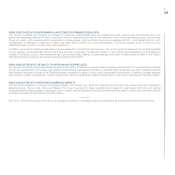 46
46 -
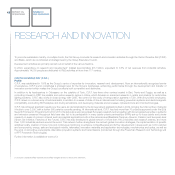 47
47 -
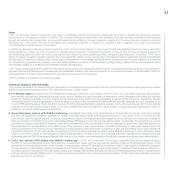 48
48 -
 49
49 -
 50
50 -
 51
51 -
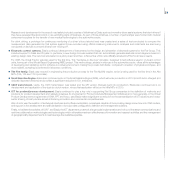 52
52 -
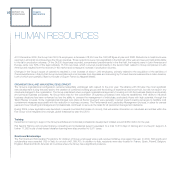 53
53 -
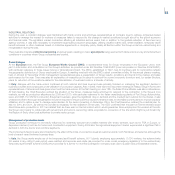 54
54 -
 55
55 -
 56
56 -
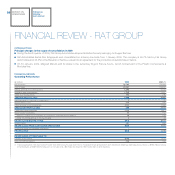 57
57 -
 58
58 -
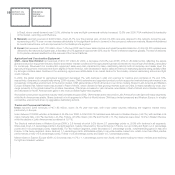 59
59 -
 60
60 -
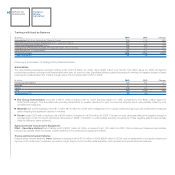 61
61 -
 62
62 -
 63
63 -
 64
64 -
 65
65 -
 66
66 -
 67
67 -
 68
68 -
 69
69 -
 70
70 -
 71
71 -
 72
72 -
 73
73 -
 74
74 -
 75
75 -
 76
76 -
 77
77 -
 78
78 -
 79
79 -
 80
80 -
 81
81 -
 82
82 -
 83
83 -
 84
84 -
 85
85 -
 86
86 -
 87
87 -
 88
88 -
 89
89 -
 90
90 -
 91
91 -
 92
92 -
 93
93 -
 94
94 -
 95
95 -
 96
96 -
 97
97 -
 98
98 -
 99
99 -
 100
100 -
 101
101 -
 102
102 -
 103
103 -
 104
104 -
 105
105 -
 106
106 -
 107
107 -
 108
108 -
 109
109 -
 110
110 -
 111
111 -
 112
112 -
 113
113 -
 114
114 -
 115
115 -
 116
116 -
 117
117 -
 118
118 -
 119
119 -
 120
120 -
 121
121 -
 122
122 -
 123
123 -
 124
124 -
 125
125 -
 126
126 -
 127
127 -
 128
128 -
 129
129 -
 130
130 -
 131
131 -
 132
132 -
 133
133 -
 134
134 -
 135
135 -
 136
136 -
 137
137 -
 138
138 -
 139
139 -
 140
140 -
 141
141 -
 142
142 -
 143
143 -
 144
144 -
 145
145 -
 146
146 -
 147
147 -
 148
148 -
 149
149 -
 150
150 -
 151
151 -
 152
152 -
 153
153 -
 154
154 -
 155
155 -
 156
156 -
 157
157 -
 158
158 -
 159
159 -
 160
160 -
 161
161 -
 162
162 -
 163
163 -
 164
164 -
 165
165 -
 166
166 -
 167
167 -
 168
168 -
 169
169 -
 170
170 -
 171
171 -
 172
172 -
 173
173 -
 174
174 -
 175
175 -
 176
176 -
 177
177 -
 178
178 -
 179
179 -
 180
180 -
 181
181 -
 182
182 -
 183
183 -
 184
184 -
 185
185 -
 186
186 -
 187
187 -
 188
188 -
 189
189 -
 190
190 -
 191
191 -
 192
192 -
 193
193 -
 194
194 -
 195
195 -
 196
196 -
 197
197 -
 198
198 -
 199
199 -
 200
200 -
 201
201 -
 202
202 -
 203
203 -
 204
204 -
 205
205 -
 206
206 -
 207
207 -
 208
208 -
 209
209 -
 210
210 -
 211
211 -
 212
212 -
 213
213 -
 214
214 -
 215
215 -
 216
216 -
 217
217 -
 218
218 -
 219
219 -
 220
220 -
 221
221 -
 222
222 -
 223
223 -
 224
224 -
 225
225 -
 226
226 -
 227
227 -
 228
228 -
 229
229 -
 230
230 -
 231
231 -
 232
232 -
 233
233 -
 234
234 -
 235
235 -
 236
236 -
 237
237 -
 238
238 -
 239
239 -
 240
240 -
 241
241 -
 242
242 -
 243
243 -
 244
244 -
 245
245 -
 246
246 -
 247
247 -
 248
248 -
 249
249 -
 250
250 -
 251
251 -
 252
252 -
 253
253 -
 254
254 -
 255
255 -
 256
256 -
 257
257 -
 258
258 -
 259
259 -
 260
260 -
 261
261 -
 262
262 -
 263
263 -
 264
264 -
 265
265 -
 266
266 -
 267
267 -
 268
268 -
 269
269 -
 270
270 -
 271
271 -
 272
272 -
 273
273 -
 274
274 -
 275
275 -
 276
276 -
 277
277 -
 278
278 -
 279
279 -
 280
280 -
 281
281 -
 282
282 -
 283
283 -
 284
284 -
 285
285 -
 286
286 -
 287
287 -
 288
288 -
 289
289 -
 290
290 -
 291
291 -
 292
292 -
 293
293 -
 294
294 -
 295
295 -
 296
296 -
 297
297 -
 298
298 -
 299
299 -
 300
300 -
 301
301 -
 302
302 -
 303
303 -
 304
304 -
 305
305 -
 306
306 -
 307
307 -
 308
308 -
 309
309 -
 310
310 -
 311
311 -
 312
312 -
 313
313 -
 314
314 -
 315
315 -
 316
316 -
 317
317 -
 318
318 -
 319
319 -
 320
320 -
 321
321 -
 322
322 -
 323
323 -
 324
324 -
 325
325 -
 326
326 -
 327
327 -
 328
328 -
 329
329 -
 330
330 -
 331
331 -
 332
332 -
 333
333 -
 334
334 -
 335
335 -
 336
336 -
 337
337 -
 338
338 -
 339
339 -
 340
340 -
 341
341 -
 342
342 -
 343
343 -
 344
344 -
 345
345 -
 346
346 -
 347
347 -
 348
348 -
 349
349 -
 350
350 -
 351
351 -
 352
352 -
 353
353 -
 354
354 -
 355
355 -
 356
356 -
 357
357 -
 358
358 -
 359
359 -
 360
360 -
 361
361 -
 362
362 -
 363
363 -
 364
364 -
 365
365 -
 366
366 -
 367
367 -
 368
368 -
 369
369 -
 370
370 -
 371
371 -
 372
372 -
 373
373 -
 374
374
 |
 |

55
On 15 October 2009, negotiations were concluded on the national collective labour agreement for employees in the metalworking sector (excluding
managers), applicable to around 97% of all Fiat Group employees in Italy. Agreement was reached between Federmeccanica and the trade unions (with
the exception of Fiom-CGIL) based on the new contractual framework established in the Accordo Interconfederale signed on 15 April 2009 (again with
the exception of CGIL). The renewed agreement, whose content is mostly pay-related, is valid for three years beginning 1 January 2010. Provisions in
the October 15th agreement relating to employment conditions contained no substantial modifications to the national collective labour agreement dated
January 2008. On 25 November, the agreement for the renewal of the national collective labour agreement for managers of industrial companies was
signed. This agreement applies to the majority of Group managers in Italy. The new agreement is valid until 31 December 2013 and covers both pay and
employment conditions.
At Group level, on the basis of the Agreement of 17 July 2009 (applicable to the majority of employees of Group companies in the metalworking sector
in Italy) signed by Fim, Uilm, Fismic, and UGL and valid for 2009 only, a performance-related bonus was paid, which averaged €1,943 for employees in
categories 1 through 4. The amount was approximately €500 lower than the average bonus paid in 2008 as a result of the decrease in Group results
reflecting the impact of the global economic crisis. As an interim, experimental measure, in addition to the bonus referred to above, the agreement also
provides for a gross one-off payment of €200 to workers at plants which achieve WCM Silver Level in 2009 or 2010.
Outside Italy, the main company-level collective agreements established during 2009 include the annual negotiation in France which resulted in salary
increases, in line with inflation, of between 1% and 1.5% depending on the company.
In Germany, agreement for renewal of the metalworkers contract, signed in November 2008 and applied by most Group companies in Germany, provided
for salary increases of 2.1% in February and May 2009. A few Group companies exercised the option, provided for in the agreement, to defer the second
increase from May to December 2009.
In Poland, company-wide pay negotiations generally provided for one-off bonuses (rather than structural increases) which averaged around PLZ 2,500 and
were payable in two instalments, one of which was directly tied to and conditional upon the achievement of productivity objectives.
In Brazil, most Group companies applied collective bargaining agreements in place with the local industry associations for each industry sector (e.g.,
FIEMG for the companies in the Belo Horizonte, Betim, and Contagem areas). Others have stipulated analogous company-wide agreements. Overall,
increases under these collective agreements were higher than inflation, reflecting the country’s current economic growth and high production levels at
Group plants but were, however, in line with increases applied for the local industrial system as a whole. Variable annual bonuses were also paid on the
basis of company results.
The level of labour unrest experienced in Italy was higher than for 2008. Minor local labour action was also taken in defense of jobs - including strikes and
protests against the non-renewal of temporary employment contracts and agency contracts and as result of the use of flexible labour mechanisms (transfer
or secondment of workers from other locations or companies who would otherwise have been subject to temporary layoff; use of overtime; introduction
of additional shifts, etc.) at certain plants where there was a significant increase in production levels due to the jump in orders following the introduction of
government incentives to stimulate demand for the automotive sector.
In addition, in relation to the agreement for the Group performance bonus and the agreement for the renewal of the national collective labour agreement for
metalworkers, limited strikes were conducted by Fiom-CGIL, the only trade union organisation which was not a signatory to the agreements.
The overall level of labour unrest in other countries was once again negligible this year.
